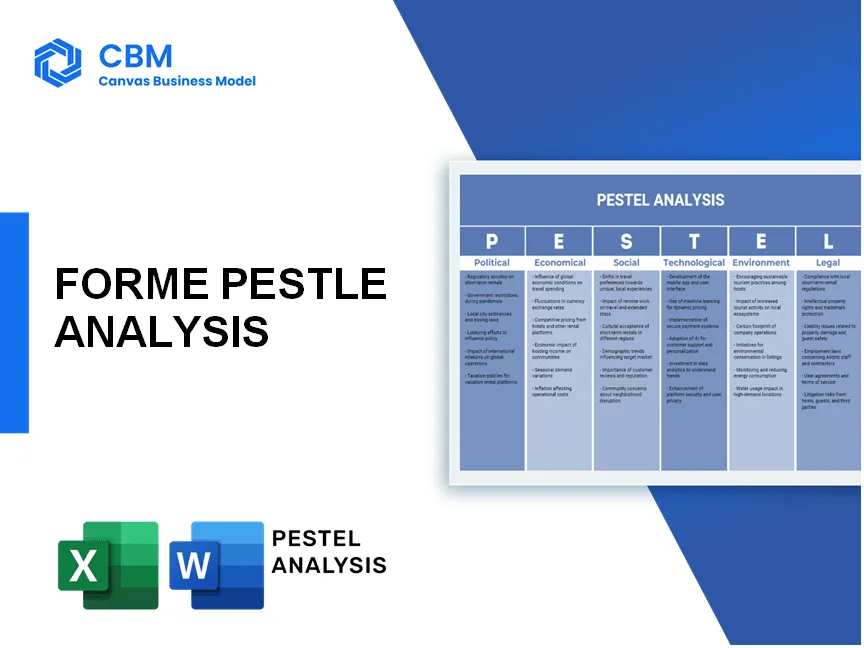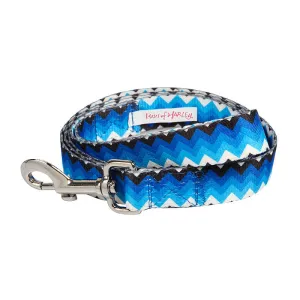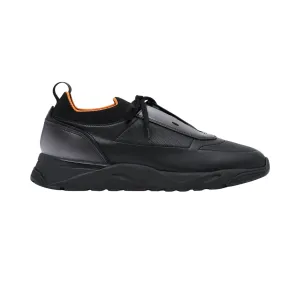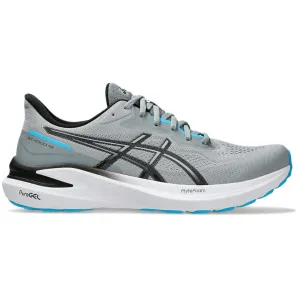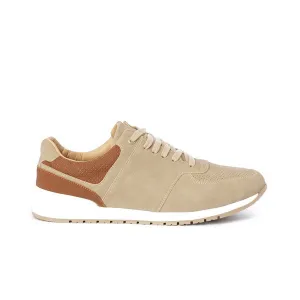In today's multifaceted landscape, understanding the dynamics affecting companies like FORME—a pioneering digital fitness platform—requires a keen awareness of various external factors. This PESTLE analysis delves into the intricate web of political, economic, sociological, technological, legal, and environmental influences that shape not just the fitness industry, but also the very foundation of FORME's innovative offerings. Curious about how these elements intertwine to create both challenges and opportunities? Read on to explore the critical factors influencing FORME's strategy and market position.
PESTLE Analysis: Political factors
Regulatory support for digital health initiatives
The United States government has been increasingly supportive of digital health technologies. As of 2021, the American Rescue Plan allocated $50 billion for public health initiatives, including support for telehealth. In 2020, the Centers for Medicare & Medicaid Services (CMS) expanded telehealth services, reporting a surge from approximately 14,000 telehealth visits per week before the pandemic to nearly 1.7 million per week by mid-2020. This support has paved the way for platforms like FORME to thrive in the digital health landscape.
Government incentives for fitness and wellness sectors
Various federal and state governments offer incentives to promote fitness and wellness. The Employee Retention Tax Credit (ERTC) was extended through the end of 2021, providing businesses up to $7,000 per employee per quarter if they retained their employees through the pandemic. Moreover, states such as New York provided grants totaling $6 million to support fitness and wellness programs in 2021.
Policies promoting telehealth and remote services
In March 2020, the Telehealth Access Act was introduced in Congress to ensure that telehealth remains accessible to patients and providers beyond the pandemic. According to a survey by the American Medical Association in 2021, 85% of physicians reported using telehealth, with 60% stating that they would likely continue using it post-pandemic, reflecting policy changes that favor remote services.
Impact of trade tariffs on equipment sourcing
In 2019, the U.S. implemented tariffs on certain imported goods, including fitness equipment, which peaked at 25%. This affected pricing strategies for companies like FORME, as the cost of goods imported from countries such as China increased significantly. In 2020, the fitness equipment market was valued at approximately $2.3 billion in the U.S., with tariffs impacting companies' profit margins by an average of 5-10% due to increased costs.
Local regulations regarding online business operations
In 2021, e-commerce sales in the U.S. grew to $870 billion, adding pressure on companies to comply with local regulations. Different states impose varying sales tax rates; for instance, California's sales tax is 7.25% while New York's is 4% plus local surcharges. Fitness and wellness companies must navigate these regulations to operate effectively. The implications of the Wayfair ruling continue to evolve, impacting how companies like FORME manage sales tax collection across states.
| Factor | Details | Impact on FORME |
|---|---|---|
| Regulatory Support | American Rescue Plan funding for health tech: $50 billion | Increased market for digital health services |
| Government Incentives | Employee Retention Tax Credit: Up to $7,000 per employee | Financial stability for workforce retention |
| Telehealth Policy | 85% of physicians utilizing telehealth in 2021 | Market validation for remote fitness solutions |
| Trade Tariffs | 25% tariff on fitness equipment imports | Increased costs impacting pricing strategy |
| Local Regulations | California sales tax: 7.25%; New York sales tax: 4% local | Increased complexity in online sales management |
[cbm_pestel_top]
PESTLE Analysis: Economic factors
Growth of the fitness industry amid rising health consciousness
The global fitness industry was valued at approximately $96.7 billion in 2021, and it is projected to reach $105.5 billion by 2023. The annual growth rate from 2021 to 2025 is estimated to be around 23%.
Increased consumer spending on health and wellness
In 2020, consumers worldwide spent over $1.5 trillion on health and wellness, with an increasing trend expected to continue. The health and wellness market is expected to expand by 10.6% annually from 2021 to 2027.
Economic downturns affecting discretionary spending on fitness
During economic downturns, consumer discretionary spending typically falls by 6.2%. For instance, during the COVID-19 pandemic, the fitness industry saw a decline of about 15% due to reduced spending on gym memberships and fitness classes.
Potential fluctuations in equipment manufacturing costs
The price of fitness equipment can be influenced by raw material costs; in 2021, the price of steel increased by 176% compared to pre-pandemic levels. This can affect the overall cost structure for companies like FORME, which rely on manufacturing smart home gym equipment.
Expansion of subscription-based business models
The global fitness subscription market was valued at around $6.5 billion in 2020 and is expected to grow at a CAGR of 33.1% from 2021 to 2028. Companies leveraging subscription models, like FORME, can benefit from consistent revenue streams and increased customer retention.
| Factor | Statistic | Year |
|---|---|---|
| Global Fitness Industry Value | $96.7 billion | 2021 |
| Projected Fitness Industry Value | $105.5 billion | 2023 |
| Health & Wellness Spending | $1.5 trillion | 2020 |
| Annual Growth Rate of Health and Wellness Market | 10.6% | 2021-2027 |
| Consumer Discretionary Spending Decline | 6.2% | During downturns |
| Fitness Industry Decline (COVID-19) | 15% | 2020 |
| Increase in Steel Prices | 176% | 2021 |
| Global Fitness Subscription Market Value | $6.5 billion | 2020 |
| CAGR of Fitness Subscription Market | 33.1% | 2021-2028 |
PESTLE Analysis: Social factors
Sociological
Shift towards home-based fitness solutions due to lifestyle changes.
The home fitness market has experienced significant growth, estimated at $3 billion in 2020 and expected to reach $5.5 billion by 2027, at a CAGR of 8.5%. The COVID-19 pandemic catalyzed this shift, with a 70% increase in home workout equipment sales in 2020 alone.
Growing trends in personalized health and fitness.
The demand for personalized fitness solutions is skyrocketing, with 67% of consumers preferring fitness plans tailored specifically to their needs. The personalized fitness segment is projected to reach $7.4 billion by 2026, growing at about 10% annually.
Increased emphasis on mental health and wellness.
According to a survey by the American Psychological Association in 2021, approximately 78% of adults reported that exercise plays a significant role in reducing stress. Spending on mental wellness within fitness programs has increased, with the global wellness economy reaching $4.5 trillion in 2018.
Acceptance of virtual training as a norm.
Data from a 2023 industry report indicated that 80% of fitness enthusiasts are utilizing virtual training platforms, a significant increase from 20% in 2019. The virtual personal training market is anticipated to surpass $1 billion by 2025, driven by advancements in technology and consumer preferences.
Rising interest in sustainable and eco-friendly fitness options.
In 2022, 64% of consumers stated they are more likely to choose brands that employ sustainable practices. Additionally, the market for eco-friendly fitness products is expected to reach $1.4 billion by 2025, with a growth rate of 12% annually.
| Factor | 2020 Market Size | 2027 Projected Market Size | Annual Growth Rate (CAGR) |
|---|---|---|---|
| Home Fitness Equipment | $3 billion | $5.5 billion | 8.5% |
| Personalized Fitness | N/A | $7.4 billion | 10% |
| Mental Wellness Programs | N/A | $4.5 trillion | N/A |
| Virtual Training Market | N/A | $1 billion | N/A |
| Sustainable Fitness Products | N/A | $1.4 billion | 12% |
PESTLE Analysis: Technological factors
Advances in smart home gym technologies
The smart home gym market is projected to reach $1.2 billion by 2026, growing at a CAGR of 23.8% from 2021. Key technologies include smart weights and interactive platforms that enhance training efficiency.
| Technology | Market Size (2021) | Projected Market Size (2026) | CAGR |
|---|---|---|---|
| Smart Home Gyms | $250 million | $1.2 billion | 23.8% |
Integration of AI for personalized training experiences
AI-driven fitness platforms can improve user engagement by up to 30%. The incorporation of AI for personalization in fitness programs is valued at approximately $1.5 billion, expected to surge to $7.5 billion by 2025.
| Year | AI in Fitness Market Size | Projected Growth |
|---|---|---|
| 2022 | $1.5 billion | 30% year-on-year |
| 2025 | $7.5 billion | N/A |
Growth of mobile and wearable fitness tracking devices
The global wearable fitness technology market is anticipated to reach $62.1 billion by 2025, with wearable devices growing at a CAGR of 18.0% from 2020. In 2022, approximately 1 billion wearable devices were shipped worldwide.
| Year | Market Size (Projected) | Wearable Devices Shipped | CAGR |
|---|---|---|---|
| 2020 | $35.7 billion | N/A | 18.0% |
| 2022 | N/A | 1 billion | N/A |
| 2025 | $62.1 billion | N/A | N/A |
Development of immersive virtual reality fitness applications
The VR fitness market is expected to exceed $12 billion by 2026, growing at a CAGR of 33.5% beyond 2021. Engagement levels in VR fitness programs are 2 to 3 times higher than traditional methods.
| Year | VR Fitness Market Size | CAGR |
|---|---|---|
| 2021 | $2 billion | 33.5% |
| 2026 | $12 billion | N/A |
Major role of social media in promoting fitness trends
Over 70% of users rely on social media platforms for fitness inspiration. Influencers have a significant impact, as 60% of consumers are likely to purchase products recommended by fitness influencers. The fitness social media market is anticipated to grow from $4 billion in 2021 to $10.6 billion by 2025.
| Year | Market Size | Growth Rate | Consumer Influence |
|---|---|---|---|
| 2021 | $4 billion | N/A | 60% likelihood |
| 2025 | $10.6 billion | N/A | N/A |
PESTLE Analysis: Legal factors
Compliance with health and safety regulations for equipment.
Compliance with health and safety regulations is critical for FORME as a manufacturer of smart home gyms. In the United States, the Consumer Product Safety Commission (CPSC) regulates fitness equipment and requires adherence to safety standards. In 2020, there were over 18,000 injuries reported related to exercise equipment according to the National Electronic Injury Surveillance System (NEISS).
Intellectual property concerns related to software and branding.
FORME must focus on protecting its intellectual property. The global market for fitness apps was valued at approximately $4.5 billion in 2020 and is projected to reach $10 billion by 2026. To safeguard its technological innovations and branding, which include unique software and training programs, FORME should consider applying for patents and trademarks.
| Intellectual Property Type | Number of Registered Items | Average Cost |
|---|---|---|
| Patents | 5 | $15,000 |
| Trademarks | 3 | $2,000 |
| Copyrights | 10 | $1,500 |
Data privacy laws impacting user information handling.
Data privacy is paramount for FORME as it handles user information. In the U.S., the California Consumer Privacy Act (CCPA) requires businesses to disclose data collection practices and allows consumers to opt-out of the sale of their personal data. Violations can incur fines of up to $7,500 per violation. Furthermore, the European Union's General Data Protection Regulation (GDPR) mandates similar compliance, with penalties reaching €20 million or 4% of global annual turnover, whichever is higher.
Liability issues surrounding virtual training services.
Liability remains a significant concern for FORME, particularly regarding virtual training services. A study noted that 25% of personal trainers reported a liability insurance claim at some point in their careers. Insurance costs can range from $500 to $2,500 annually, depending on coverage. Without the proper liability waivers, FORME could face legal repercussions for injuries sustained during virtual sessions.
Changes in consumer protection laws affecting online services.
New consumer protection laws impact how FORME operates its online services. In 2022, the Federal Trade Commission (FTC) enforced stricter regulations on online subscription services, including automatic renewals and clear cancellation policies, resulting in fines up to $43,792 for violations. Monitoring these changes is essential as they can significantly affect customer retention and trust.
PESTLE Analysis: Environmental factors
Increasing demand for sustainable fitness products
According to a report by Allied Market Research, the global green fitness equipment market is projected to reach $1.3 billion by 2025, growing at a CAGR of 6.9% from 2018 to 2025.
Retail sales of fitness and recreational sports centers in the U.S. reached $31.3 billion in 2022, with a significant portion focusing on sustainability.
Impact of shipping and manufacturing on carbon footprint
Research by EcoAct shows that logistics and supply chain operations account for approximately 30% of the total carbon emissions in the fitness industry.
In 2020, the global carbon footprint from shipping was estimated to be around 1.07 billion metric tons CO2 equivalent, with an increasing focus on reducing emissions.
Eco-friendly materials in gym equipment production
Manufacturers are increasingly using recycled materials; for instance, the use of recycled rubber in gym flooring can reduce carbon emissions by 40% compared to traditional materials.
According to a study from the University of Cambridge, transitioning to eco-friendly materials could lower the production lifecycle emissions of fitness products by up to 50%.
| Material Type | CO2 Emissions Reduction (%) | Source |
|---|---|---|
| Recycled Rubber | 40% | University of Cambridge |
| Bamboo | 50% | Various studies |
| Recycled Plastic | 30% | Environmental Protection Agency (EPA) |
| Organic Cotton | 40% | Global Organic Textile Standard (GOTS) |
Corporate responsibility initiatives in reducing waste
As of 2023, approximately 70% of fitness companies have initiated corporate responsibility programs focusing on waste reduction and recycling.
FORMA and similar companies have committed to achieving 100% recyclable or reusable packaging by 2025.
Importance of green technology in virtual platforms
The virtual fitness market is projected to reach approximately $59.2 billion by 2027, with green technologies playing a significant role in sustaining this growth.
Utilizing cloud computing and advanced data analytics reduces the carbon footprint of virtual fitness platforms by about 20%.
An industry survey revealed that 68% of consumers prefer fitness brands that prioritize sustainability and green technology.
In conclusion, FORME stands at the forefront of a rapidly evolving landscape shaped by key factors in the PESTLE analysis. By leveraging political support for digital health and wellness, tapping into the economic potential of a growing market, and adapting to shifting sociological trends, FORME is well-positioned for success. Coupled with cutting-edge technological innovations and a firm adherence to legal regulations, along with a commitment to sustainable environmental practices, the company is not just riding the wave of the fitness revolution but also paving the way for a healthier, more connected future.
[cbm_pestel_bottom]

